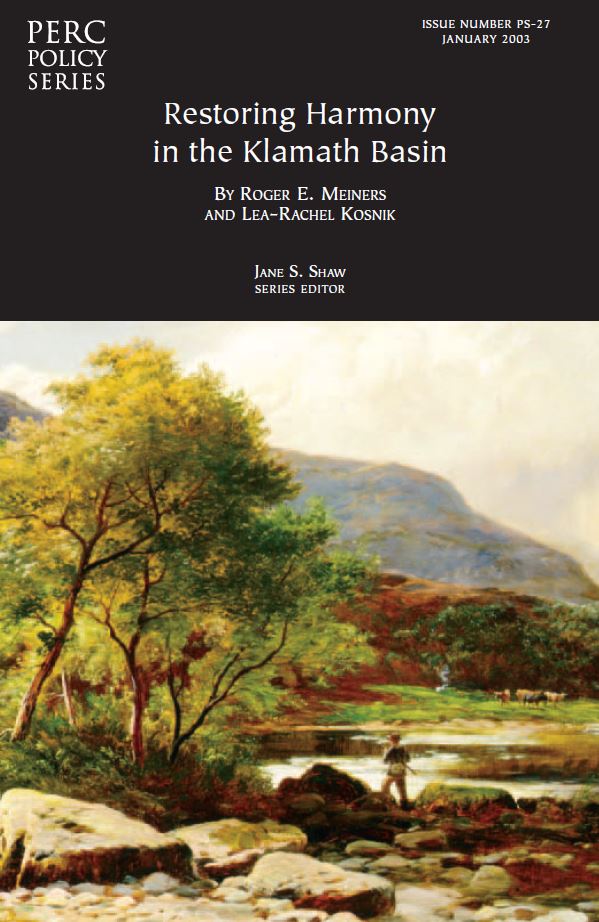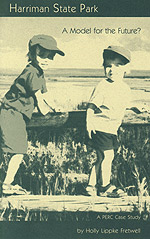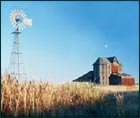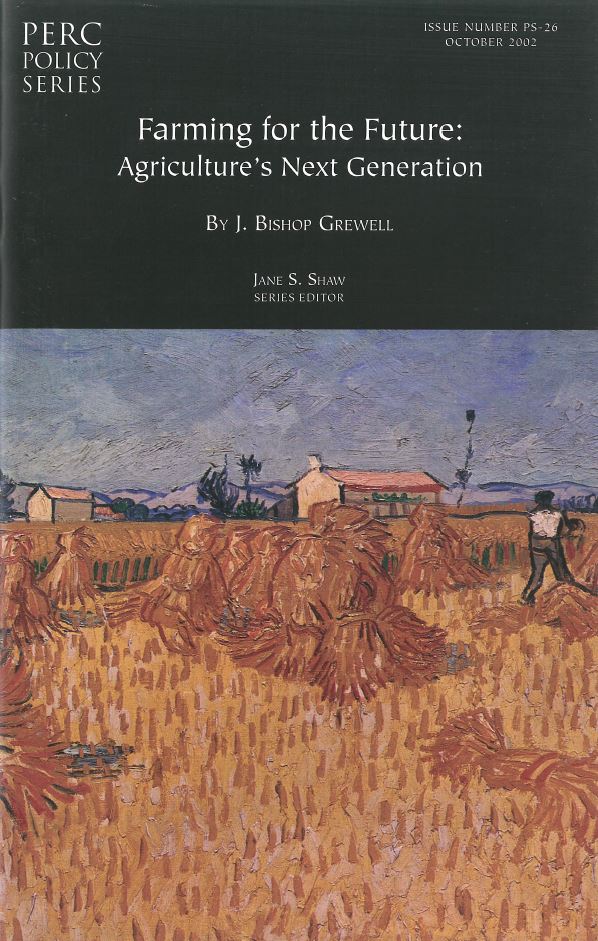President Bush had numerous chances to show that conservative principles include conservation, yet at midterm scores low grades for implementing the tenets of free market environmentalism, which emphasizes establishing incentives and clarifying property rights within a growing economy that values environmental quality. Instead his administration continues an unfortunate trend of making the Republican Party […]
Search results for: Valid Braindumps C_THR97_2311 Sheet 📽 C_THR97_2311 Valid Examcollection 😸 C_THR97_2311 Reliable Study Plan 🙀 Easily obtain free download of 【 C_THR97_2311 】 by searching on ☀ www.pdfvce.com ️☀️ 🦃C_THR97_2311 Valid Examcollection

Restoring Harmony in the Klamath Basin
Restoring Harmony in the Klamath Basin explains how this conflict developed and offers a solution—markets in water. Written by Roger Meiners and Lea-Rachel Kosnik, this paper persuasively argues that clarification of property rights to water is fundamental to ending the crisis.

Facing the Future
[…] sense of outrage and thinly disguised criticism of farm program payments isn’t confined to “activist” groups. Consider the tone of these titles: “A New Villain in Free Trade: The Farmer on the Dole,” (New York Times, August 25, 2002); “Old McDonald Had a Subsidy”‘ (Salon, May 1, 2002); and, most ominously, the recent […]

The Environmental Kuznets Curve: A Primer
DOWNLOAD THE FULL REPORT Executive Summary Since 1991, when economists first reported a systematic relationship between income changes and environmental quality, this relationship, known as the Environmental Kuznets Curve (EKC), has become standard fare in technical conversations about environmental policy (Grossman and Krueger 1991). When first unveiled, EKCs revealed a surprising outcome: Some […]

Idaho’s Harriman State Park – A Model for the Future?
State parks across the nation are serving more and more visitors while struggling to preserve natural and cultural resources. As demands for tax-generated revenues grow, many state legislatures are cutting appropriations to their park systems. Shrinking funds and growing usage threaten the well-being of all our state parks.

Saving Heritage Breeds from Extinction
[…] the authorities, but the irony of the situation remained. Cotswold sheep are known for their hardiness. They have dense coats of long, coarse, curly wool and can easily withstand cold, wind, and rain. For those whose memories extend back to pre-polar-fleece days, wool was the fabric that kept you warm when it was wet. […]

Alligators Go West
[…] the South Alligator hides are also a money-making venture for Ray. He has hundreds of tanned and dyed hides which are both supple and durable. His future plans include a gift shop on the farm where he will sell alligator purses, wallets, and boots. The breeding facility has become a popular field trip for […]

What’s So Special About the Farm?
[…] at the cost of environmental quality. For example, sugar subsidies have resulted in pollution of the Everglades (Thurman 1995, 33-38), the Bureau of Reclamation has dammed many free-flowing streams and its rules (plus state laws) have kept water from moving to higher-valued uses outside agriculture (Anderson and Snyder 1997; Gardner 2003), government spraying of […]

Beer for Bessie
[…] moving away from drying because it is expensive and energy-intensive. And, according to the Nebraska Institute of Agriculture and Natural Resources, wet grains provide more nutrition. The study found that feeding wet by-products to livestock compared to dried grains yielded cumulative net economic benefits of $215 million in Nebraska from 1992 through 1999 (Perrin […]

Farming for the Future: Agriculture’s Next Generation
Agriculture has proven that it can feed the world. Ever-increasing yields and changing demographics have ensured the cultivation of sufficient food; only distribution remains an obstacle.